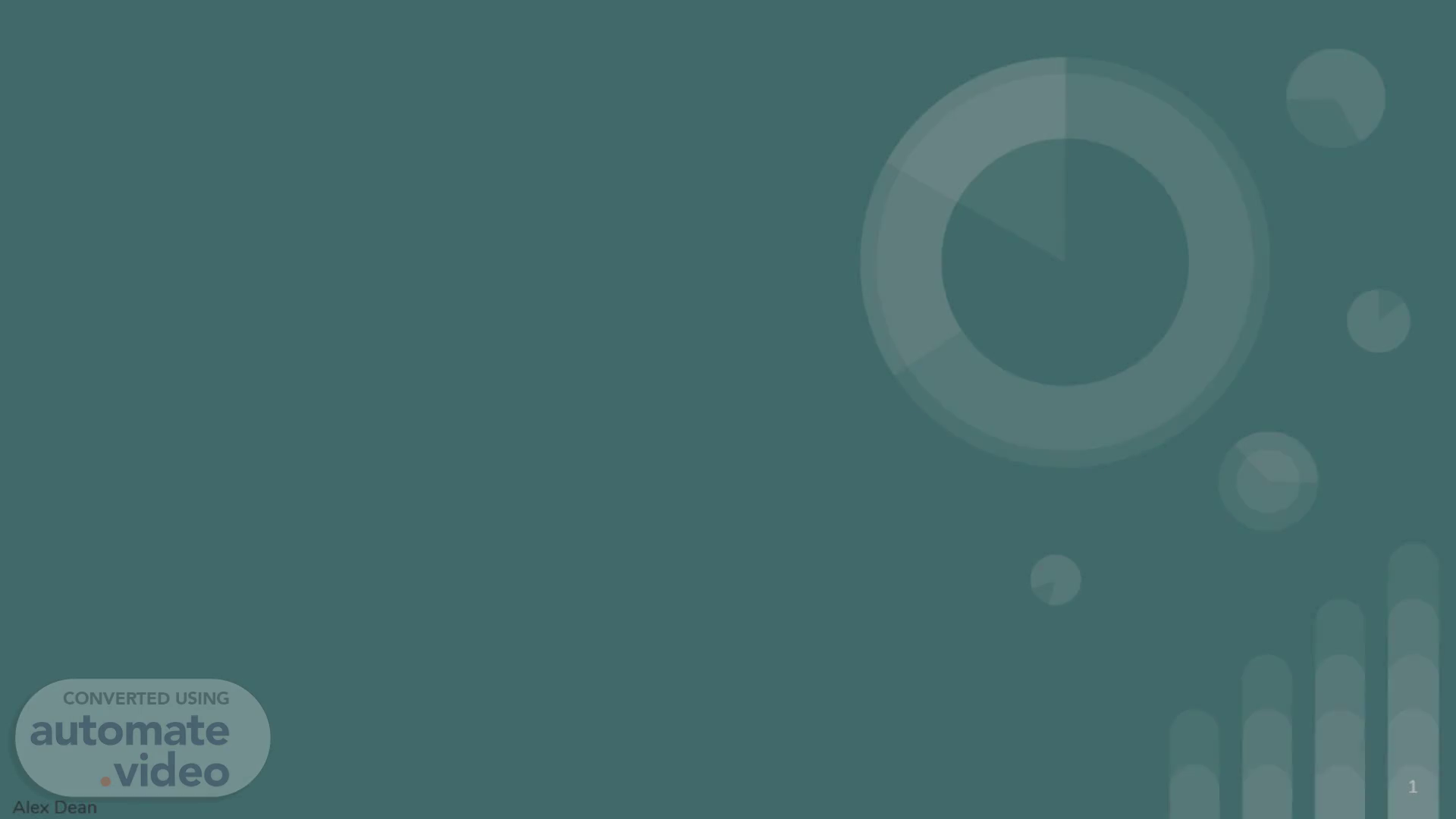Scene 1 (0s)
[Audio] The Internet of Things (IoT) By: Emma Aldean, Alex Dean, David Mendoza and Samantha Schleyer Professor, Maria Rin Semester & Year, Fall 2024 In this presentation, we will be looking over the following: What is the Internet of Things (ioT)?.
Scene 2 (22s)
[Audio] In this presentation, we will be looking over the following: What is the Internet of Things (loT)? Implementation examples of the Internet of Things (loT) Components of the Internet of Things (loT).
Scene 3 (36s)
[Audio] What is the Internet of Things (IoT)? The Internet of Things (IoT) refers to a network of interconnected devices ranging from appliances and vehicles to everyday objects that can collect, exchange, and process data. Internet of Things (IoT) devices are characterized by key features, including sensors and connectivity, data exchange, and remote access across a wide range of applications. IoT devices have a profound impact on our daily lives, seamlessly integrating into the multitude of devices and systems we rely on. From smart home technologies to wearable health monitors, these interconnected devices enhance convenience, efficiency, and decision-making, transforming how we interact with the world around us..
Scene 4 (1m 31s)
[Audio] The History of Internet of Things The history of the Internet of Things (IoT) dates back to the 1980s, with one of its earliest implementations being a Coca-Cola vending machine at Carnegie Mellon University. This machine was able to report its inventory and cooling status over the network, marking one of the first instances of devices communicating data remotely. The concept of the Internet of Things (IoT) wasn't officially coined until 1999, when Kevin Ashton, the Executive Director of MIT's Auto-ID Labs, introduced the term. Ashton used it to describe a vision of a networked world where everyday objects could communicate and share data seamlessly..
Scene 5 (2m 20s)
[Audio] How IoT Devices Work Internet of Things (IoT) devices function by using sensors to gather data from their environment. This data is then processed by software and transmitted to other connected devices or systems, enabling real-time analysis, decision-making, and automation. IoT devices can communicate over the internet, offering the added benefit of remote control and monitoring, allowing users to interact with and manage devices from anywhere at any time. Machine learning is another key feature integrated into IoT devices, enabling them to simulate human interactions by learning user preferences and behaviors over time. This allows devices to make smarter, more personalized decisions and improve their performance based on past experiences..
Scene 6 (3m 10s)
The Internet of Things in Households. The Internet of Things (IoT) turns homes into smart, connected places that are safer, more efficient, and easier to use! -Smart Appliances: Ovens, Washers and Dryers, and Refrigerators! -Smart Security Systems: Doorbells with cameras inside, and cameras you can access through your phone. -Smart Entertainment: Televisions and speakers that you control with your phone. -Smart Thermostats: Controlled through your phone. -Voice-Controlled Assistants.
Scene 7 (3m 34s)
The IoT Used In Our Communities. Smarter, safer, and more sustainable neighborhoods are made possible by IoT, which raises everyone's quality of life. -Waste Managing: Smart trash cans with sensors. -Public Transportation: GPS tracking in public transportation apps. -Environmental Monitoring: Air-quality sensors and weather detectors..
Scene 8 (3m 53s)
The IoT Used In Modern Healthcare. IoT in healthcare improves patient results by making medical solutions more sophisticated, user-friendly, and more effective. -Health trackers that you can wear: (Smart watches) -Smart Medical Equipment: ventilators, infusion pumps, and imaging machines with embedded computers and sensors..
Scene 9 (4m 13s)
Components of the Internet of Things. [image] Thing or Device Cloud Network Gateway user Interface Analytics.
Scene 10 (4m 32s)
Components of the Internet of Things. The 6 key components of the Internet of Things.
Scene 11 (5m 22s)
Components of the Internet of Things. Samantha Schleyer.
Scene 12 (5m 31s)
Student Contribution Summary Alex Dean Slides 1-2, 12-13 Title/Summary David Mendoza Slides 3-5 What is the Internet of Things (loT)? Emma Aldean Slides 6-8 Implementation examples of the Internet of Things (loT) Samantha Schleyer Slides 9-11 Components of the Internet of Things (loT).
Scene 13 (5m 48s)
What did you learn about the Collaboration Experience? Collaboration projects are always stressful, especially in an online learning environment. Everyone prioritizes their workload and work/life balance differently. That's just how life is sometimes, you'll almost always be working with others; so learning how to communicate and rally a team to reach your goal is a valuable life skill to have! What did you learn about the Topic? It was fascinating to see how many things are really an IoT! The everyday example I related to the most was the smart watch. Your smart watch has dozens of sensors that collect all of this information. Your watch can be connected to your phone or the internet. Your watch can process some information but by relaying it to your phone allows the phone to do the bulk processing of the data. You can interact with this data from an app on your phone or from your smartwatch. If your phone or your watch are lost, all of this data is also being saved or made available to you from the cloud. You're now able to make decisions on your health, sleep habits, noise exposure... etc all from the data collected from your watch!.
